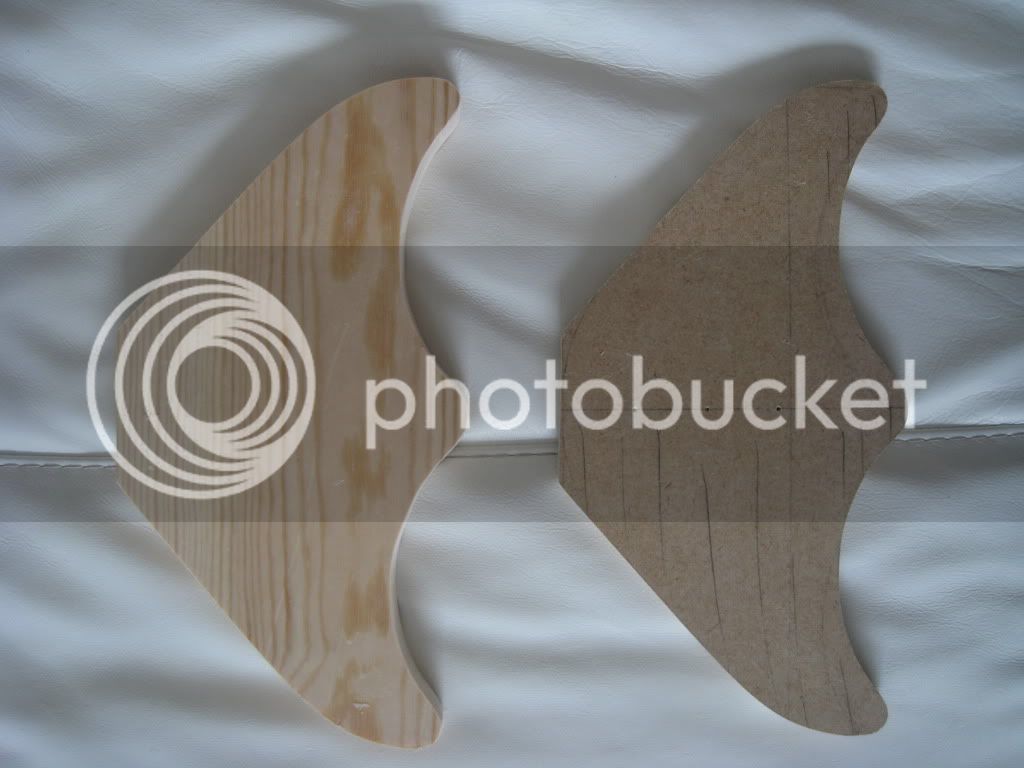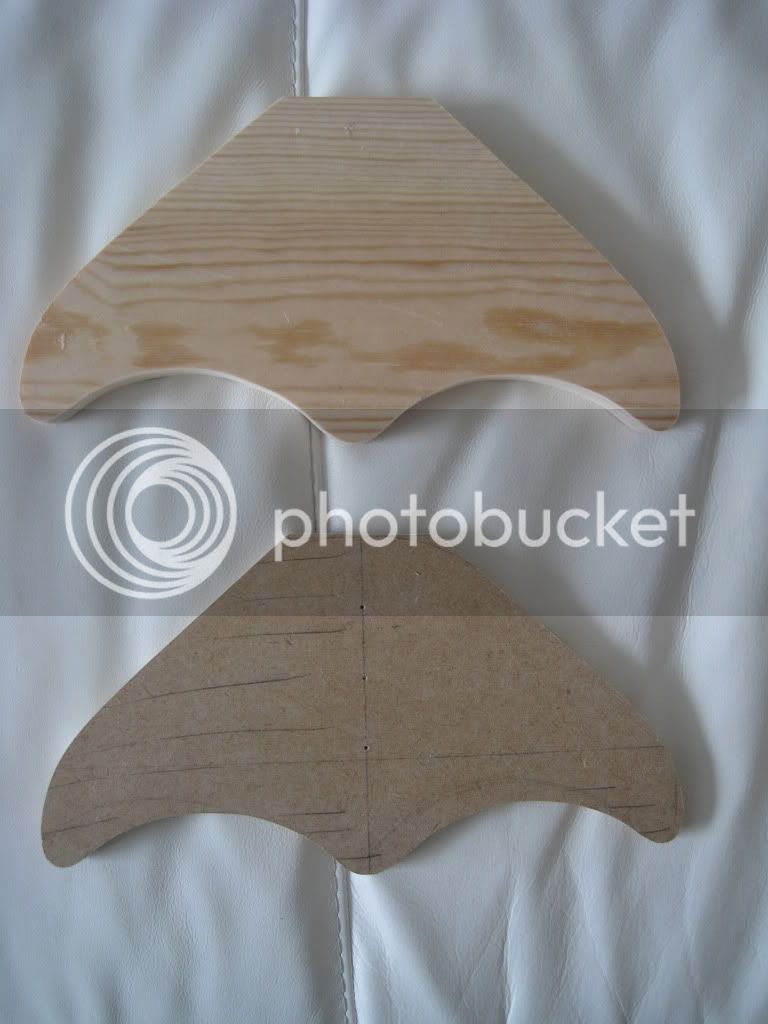goldeneyedmonkey
Established Member
Ay up folks,
I've been working on a few kids toys, mainly a couple of ride-on aeroplanes and some balance bikes. I've made templates out of 9mm MDF so that I can (in theory) make them fairly quickly once said templates have been made. I've got both bearing guided twin-flute straight bits, one with the bearing on the top and one with the bearing on the bottom of the bit, in a table. Template attached to the stock (1" pine for these prototypes), and then cut nearly to size with a jigsaw as my B/S is playing up (don't get me started! ) However, when routing I'm getting mad tearout, coupled with the fact that I've got no dust extraction due to DE being sent back on a warranty claim, it's driving mental, there's been a fair few unscheduled brew breaks to calm down and take a step back, believe you me :twisted:
) However, when routing I'm getting mad tearout, coupled with the fact that I've got no dust extraction due to DE being sent back on a warranty claim, it's driving mental, there's been a fair few unscheduled brew breaks to calm down and take a step back, believe you me :twisted:
Anyway, what am I doing wrong? I initially had it a top speed, thinking this is what CNC routers would use, after getting a scary snatch from the bit I turned the speed down and this worked a bit better, but still getting tearout on the end-grain. This isn't the case when I'm using a round-over or similar bearing guided bit, but with these straight bits it's catching and producing tearout. Is the answer to do most of it in the table, and then change to using it in a handhled router? - for the one side of the end grain that's catching/ tearing out.
The finish is very good (Wealden bits), better than I was expecting, but the only issue is the tearout.
Sorry for rambling, it's been a long day. Any help/ ideas would be much appreciated as with the BS, DE being out of order, having to wear a mask all day and getting dust everywhere, this template issue is driving me loco!
Thanks all. _Dan
I've been working on a few kids toys, mainly a couple of ride-on aeroplanes and some balance bikes. I've made templates out of 9mm MDF so that I can (in theory) make them fairly quickly once said templates have been made. I've got both bearing guided twin-flute straight bits, one with the bearing on the top and one with the bearing on the bottom of the bit, in a table. Template attached to the stock (1" pine for these prototypes), and then cut nearly to size with a jigsaw as my B/S is playing up (don't get me started!
Anyway, what am I doing wrong? I initially had it a top speed, thinking this is what CNC routers would use, after getting a scary snatch from the bit I turned the speed down and this worked a bit better, but still getting tearout on the end-grain. This isn't the case when I'm using a round-over or similar bearing guided bit, but with these straight bits it's catching and producing tearout. Is the answer to do most of it in the table, and then change to using it in a handhled router? - for the one side of the end grain that's catching/ tearing out.
The finish is very good (Wealden bits), better than I was expecting, but the only issue is the tearout.
Sorry for rambling, it's been a long day. Any help/ ideas would be much appreciated as with the BS, DE being out of order, having to wear a mask all day and getting dust everywhere, this template issue is driving me loco!
Thanks all. _Dan






